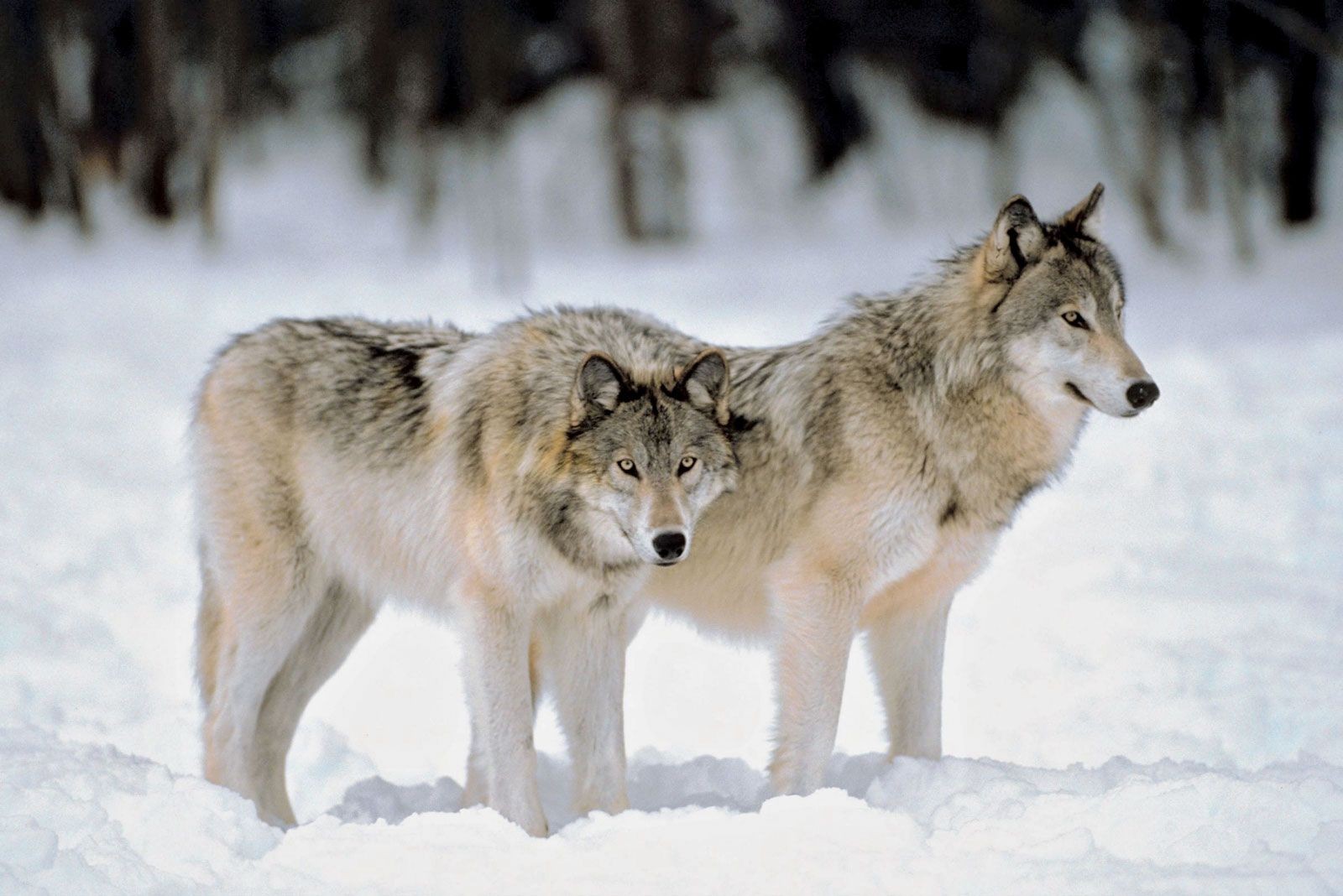Wolves, renowned for their complex social structures and strong pack bonds, communicate in fascinating ways. Among their vocalizations, the howl stands out as particularly evocative. But Why Do Wolves Howl? This iconic sound serves multiple crucial purposes for wolf packs, ranging from long-distance communication to expressing social cohesion.
 Grey wolves howling in a snowy forest, demonstrating wolf pack communication and territorial behavior.
Grey wolves howling in a snowy forest, demonstrating wolf pack communication and territorial behavior.
One primary reason wolves howl is for location communication. Wolf packs establish and defend large territories, sometimes spanning thousands of square kilometers, especially where prey is scarce. During hunting expeditions, wolves may become separated from their pack. A howl acts as a long-range signal, broadcasting their location to pack members across vast distances. In open terrains like tundras, a wolf howl can carry for up to 16 kilometers (10 miles), facilitating reunion and coordinated movements.
Beyond internal pack communication, howling plays a vital role in territorial defense. Wolves utilize aggressive howls to warn rival packs or solitary wolves to stay clear of their designated territory. This vocal assertion serves as a boundary marker, supplementing physical markings like urine and feces. By howling, wolves effectively communicate “stay away” to potential intruders, minimizing direct confrontations and protecting their resources.
Interestingly, recent research has revealed another dimension to wolf howling: affection and social bonding. A 2013 study explored the emotional context of wolf howls and discovered that wolves howl more frequently to pack members with whom they share strong social connections. Saliva tests revealed negligible levels of cortisol, a stress hormone, in these howling wolves. This suggests that these howls are not driven by anxiety but potentially by positive emotions like affection, strengthening the bonds within the pack.
In conclusion, the haunting howl of a wolf is far more than just a sound of the wild. It’s a sophisticated communication tool used for coordinating pack movements over long distances, defending territory from rivals, and expressing social bonds within the pack. Understanding why wolves howl provides valuable insights into the complex social lives and communication strategies of these fascinating animals.
